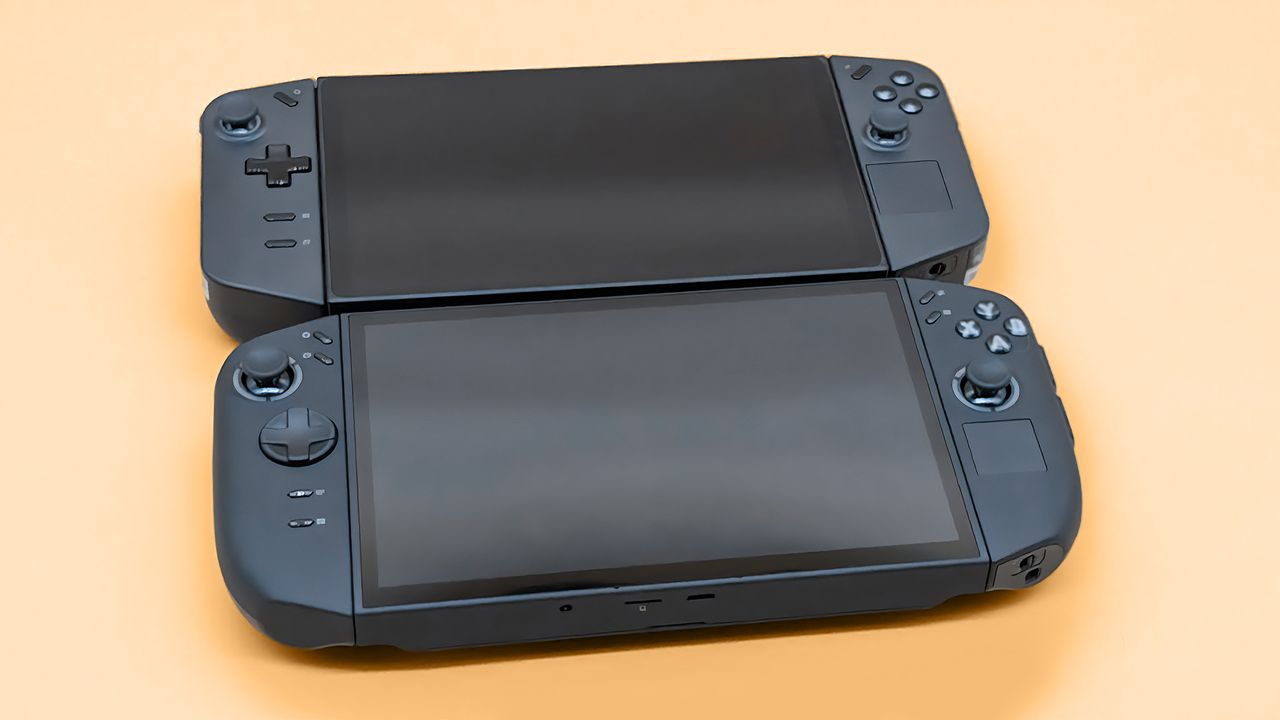
I’ve reviewed both the original Legion Go and the newer Legion Go 2 for Windows Central.
I was eager to compare the new handheld gaming PC’s design to the original before I even started using it.
I thought others might be interested too, so I took a lot of photos showing the differences between the two devices. Now you can see them for yourself!
This section focuses solely on the physical design changes. For a detailed look at how the Legion Go 2 performs against the original Legion Go, see my comparison article.
A more ergonomic casing and layout
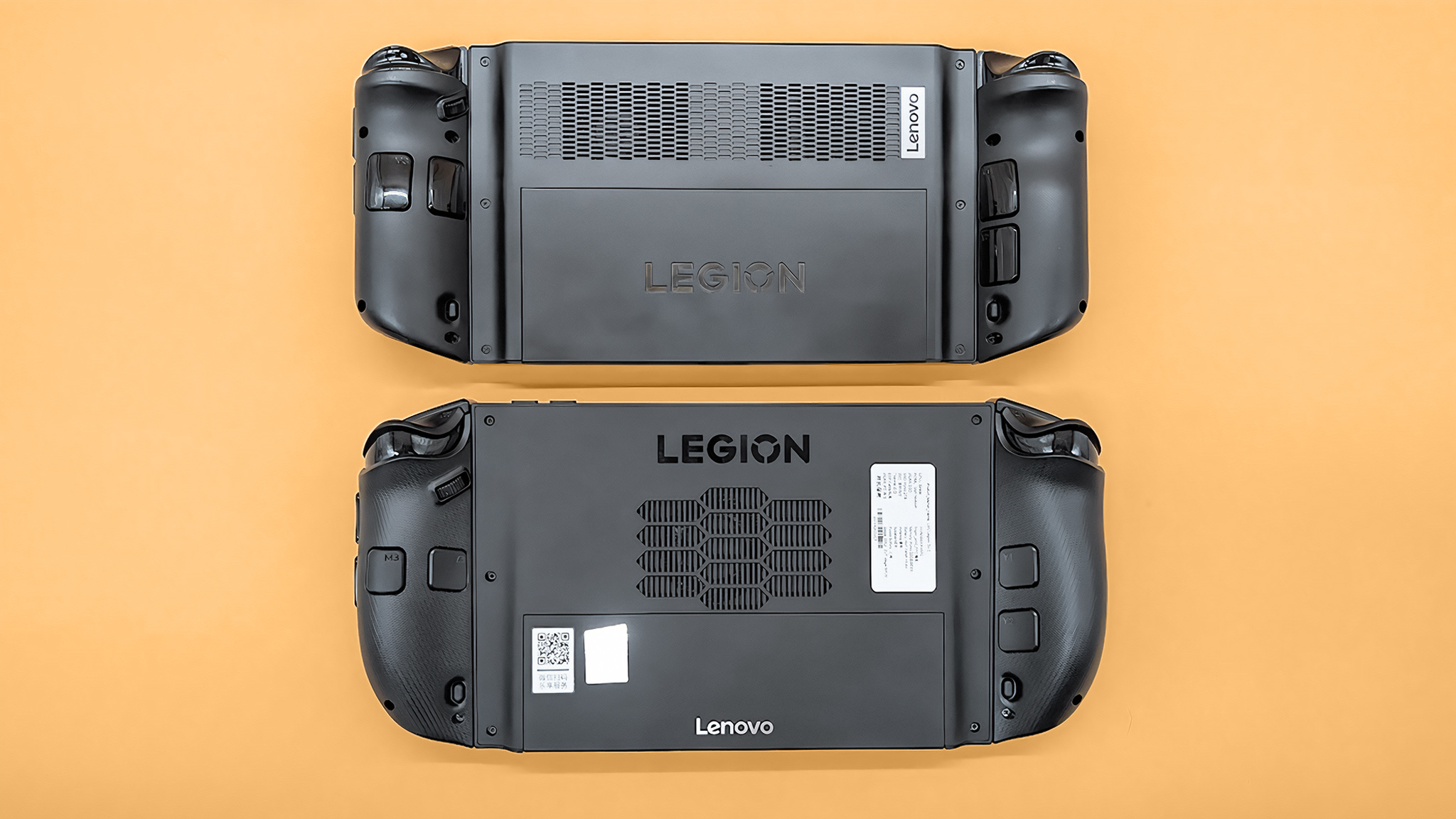
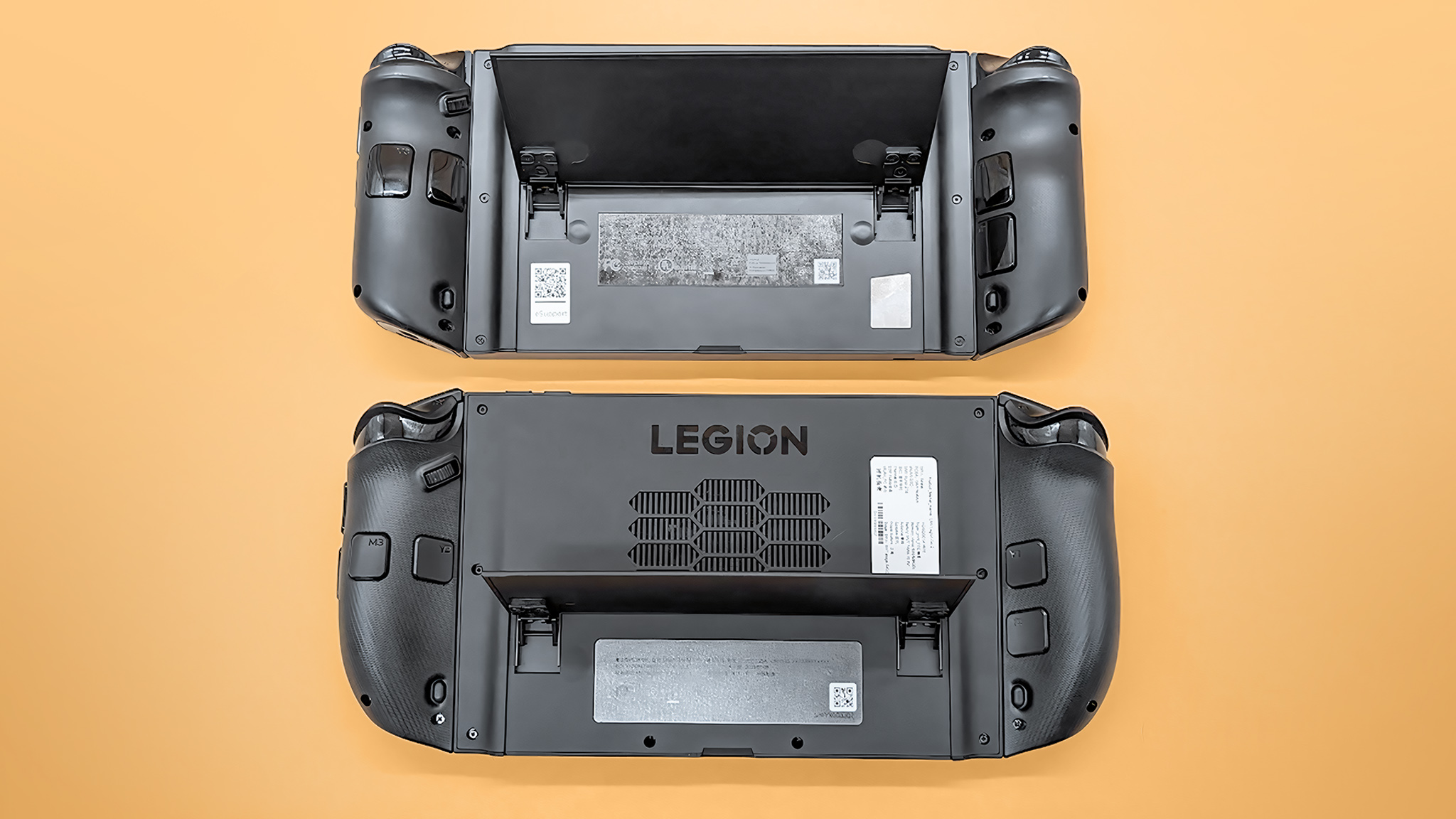
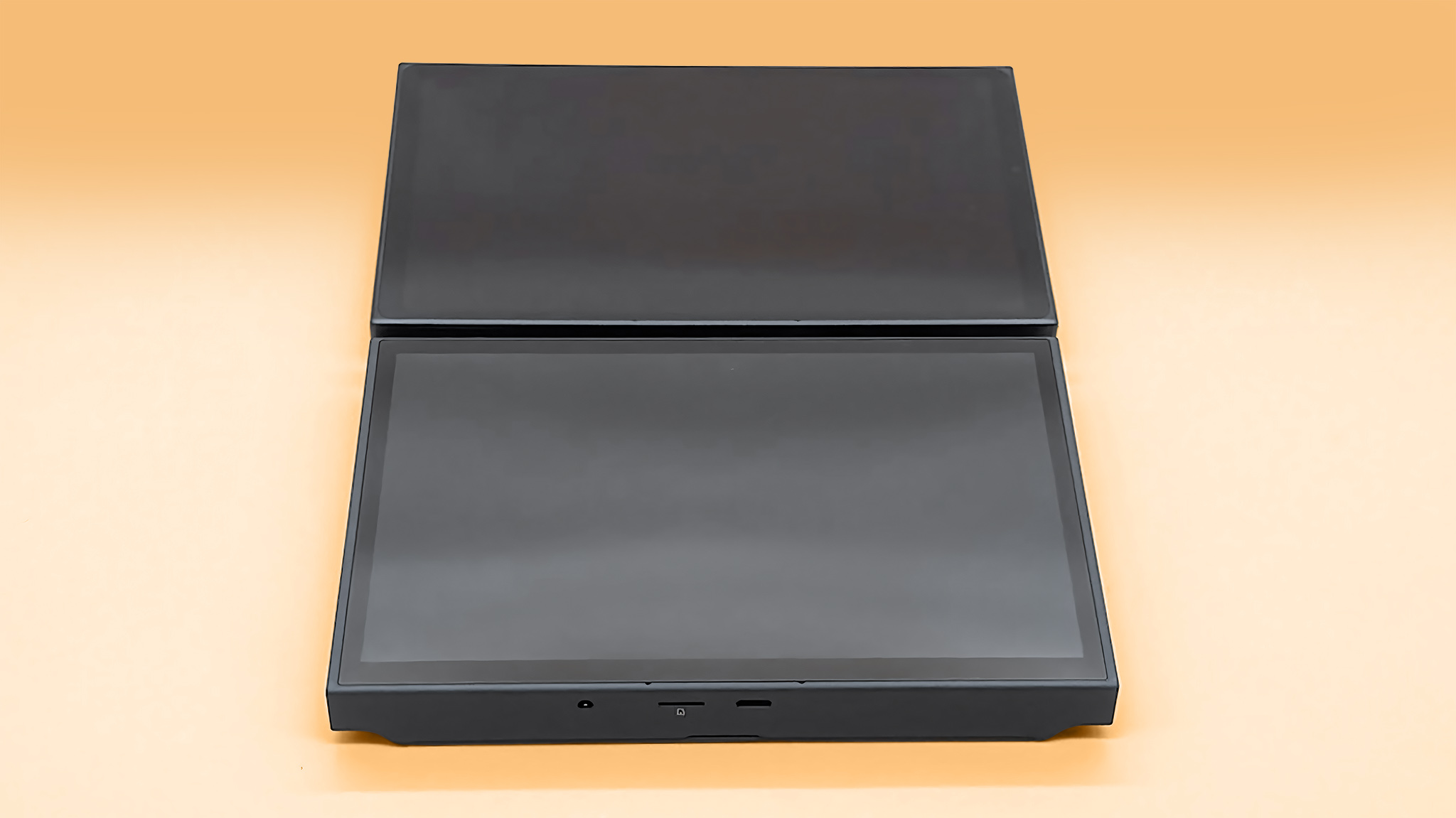
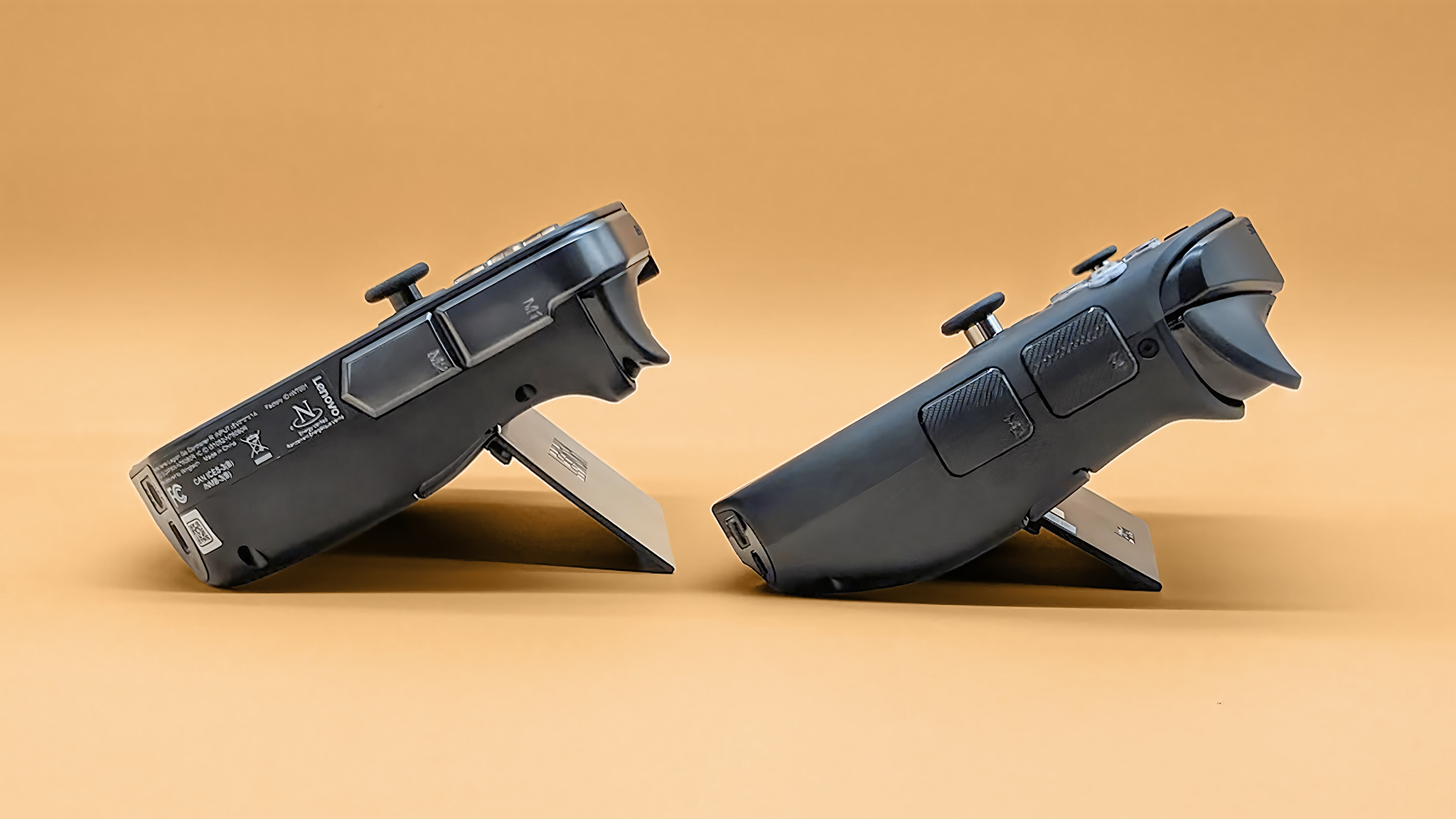
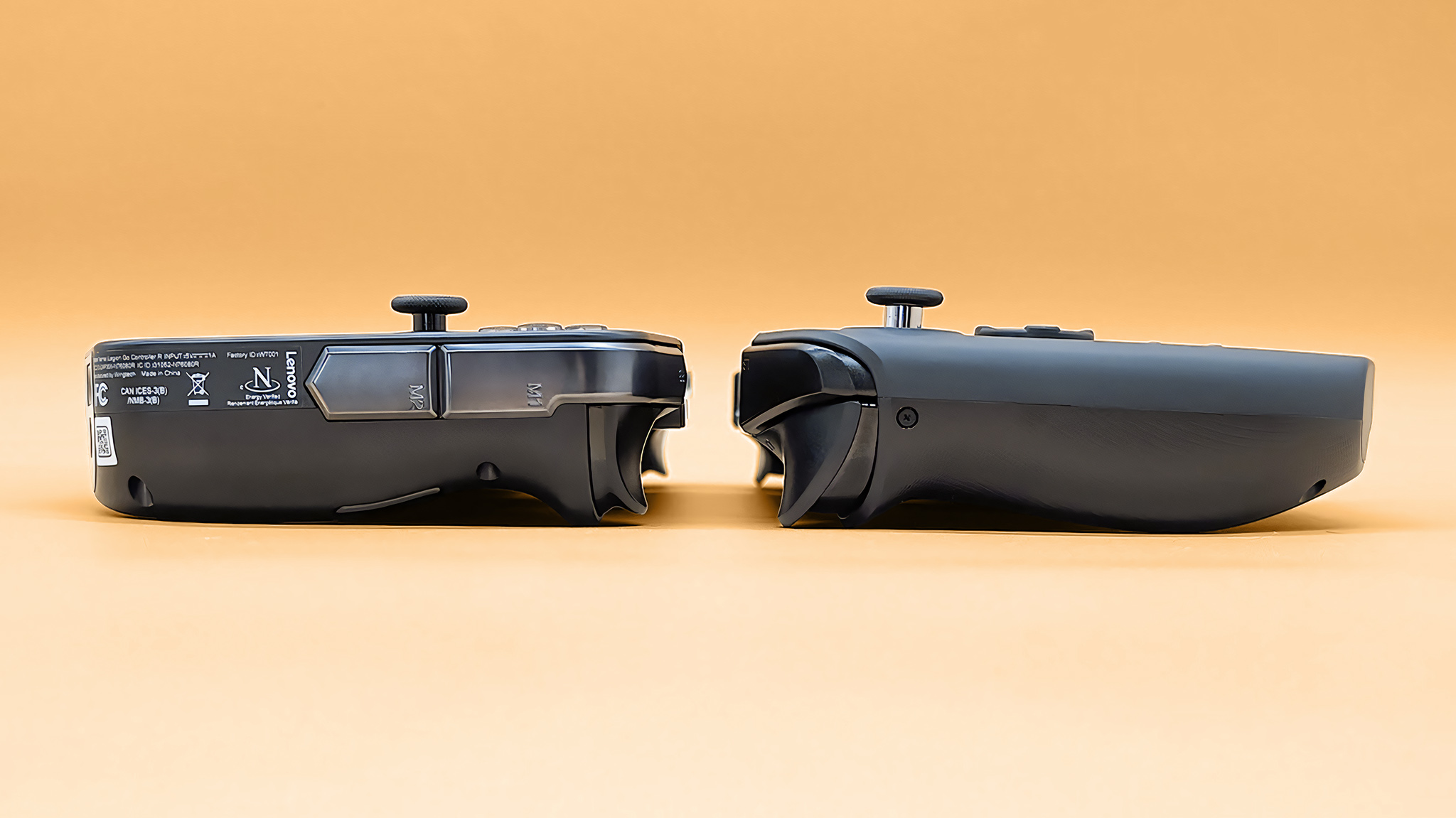
- The overall shape of the Legion Go 2 is more rounded and offers a better ergonomic experience.
- Buttons, controls, and joysticks have been repositioned slightly on Legion Go 2, making them easier to reach without having to stretch fingers as far.
- The Legion Go 2 kickstand isn’t as tall, but it still props the Legion Go 2 back to a similar degree.
- The Legion Go 2 display and controllers are thicker than the original handheld.
- The Legion Go 2 display is also wider on top and narrower on bottom to help tilt the screen toward the viewer without straining hands as much.
Rearranged ports and buttons, plus a new one
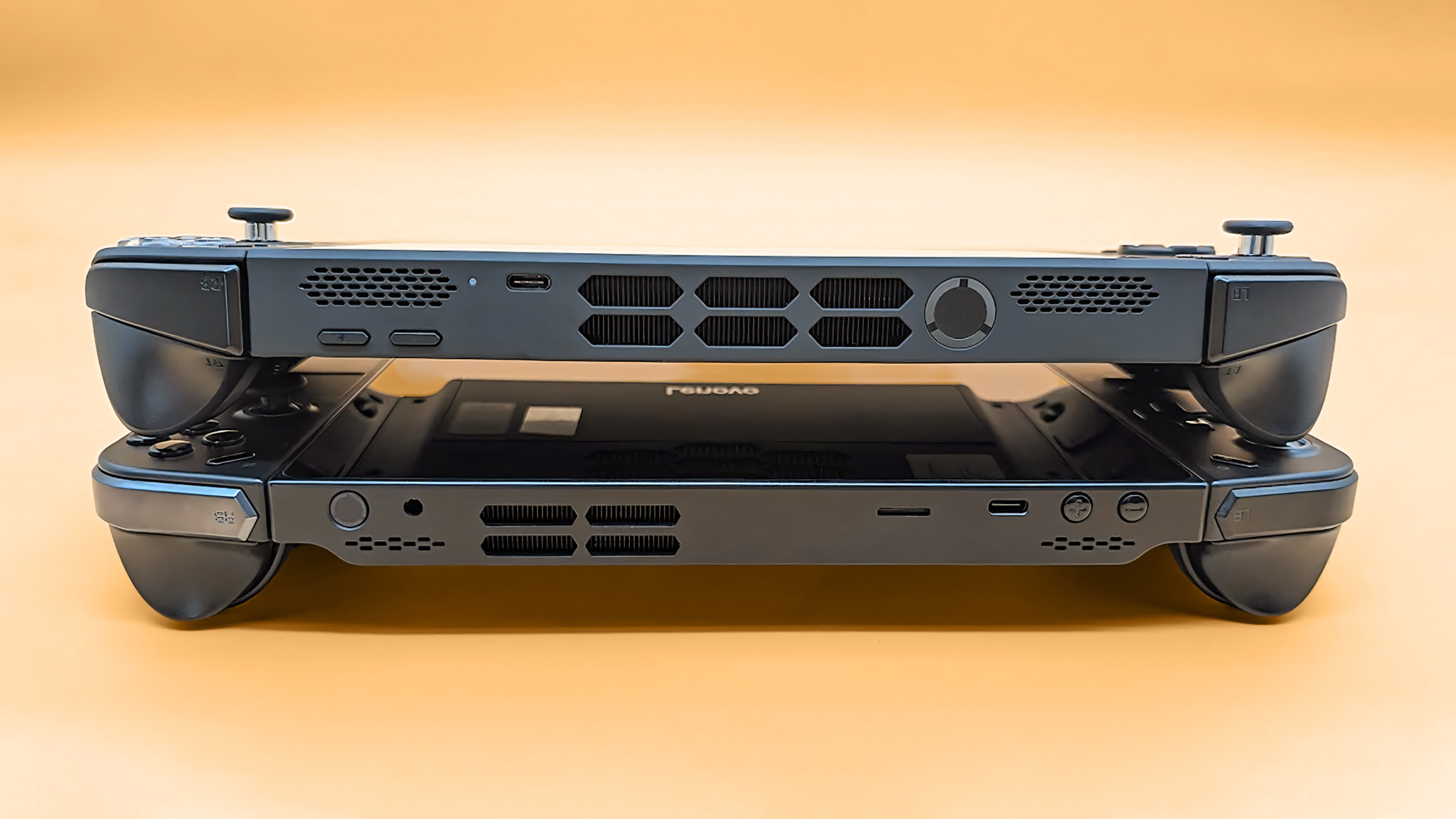
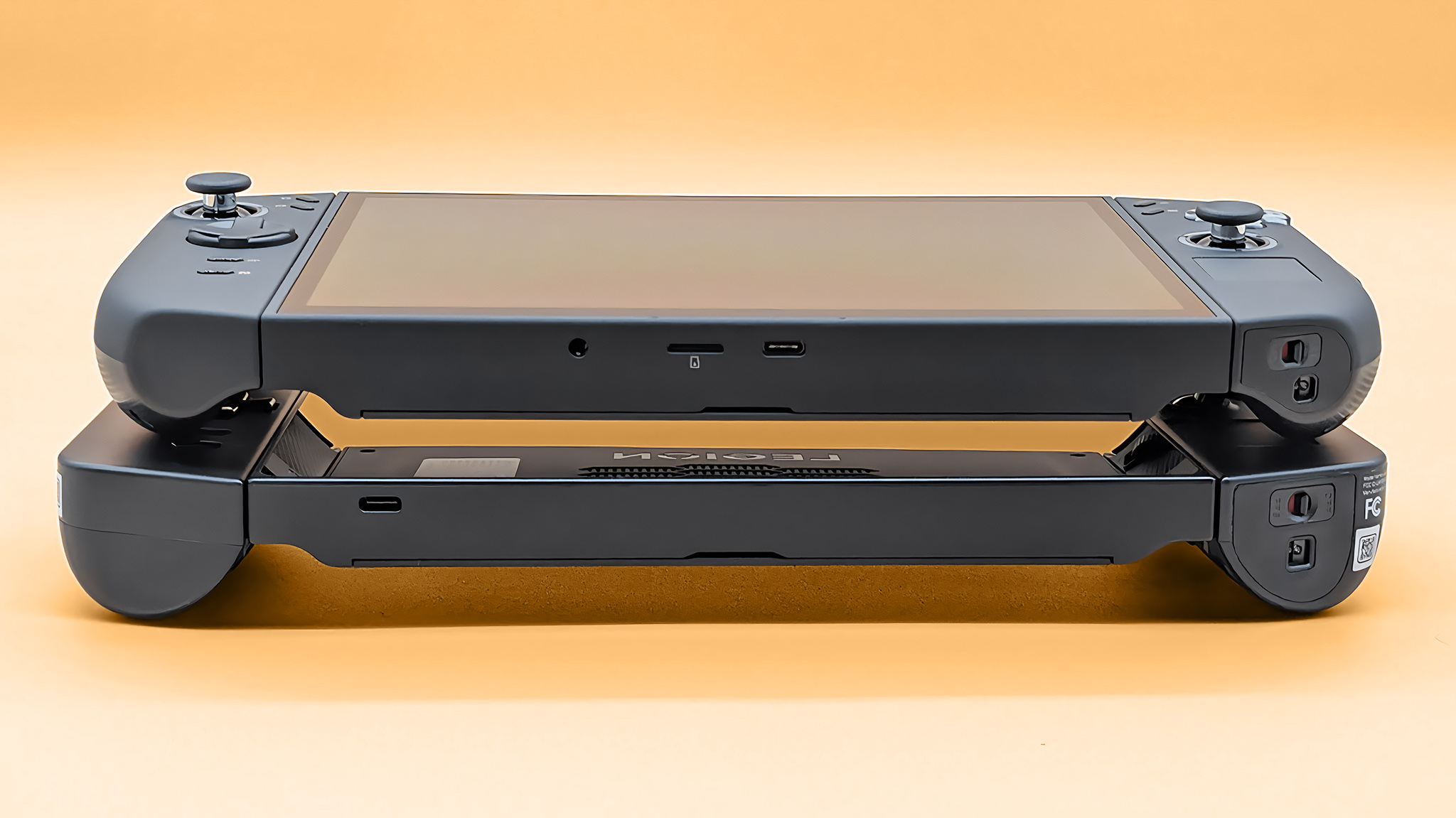
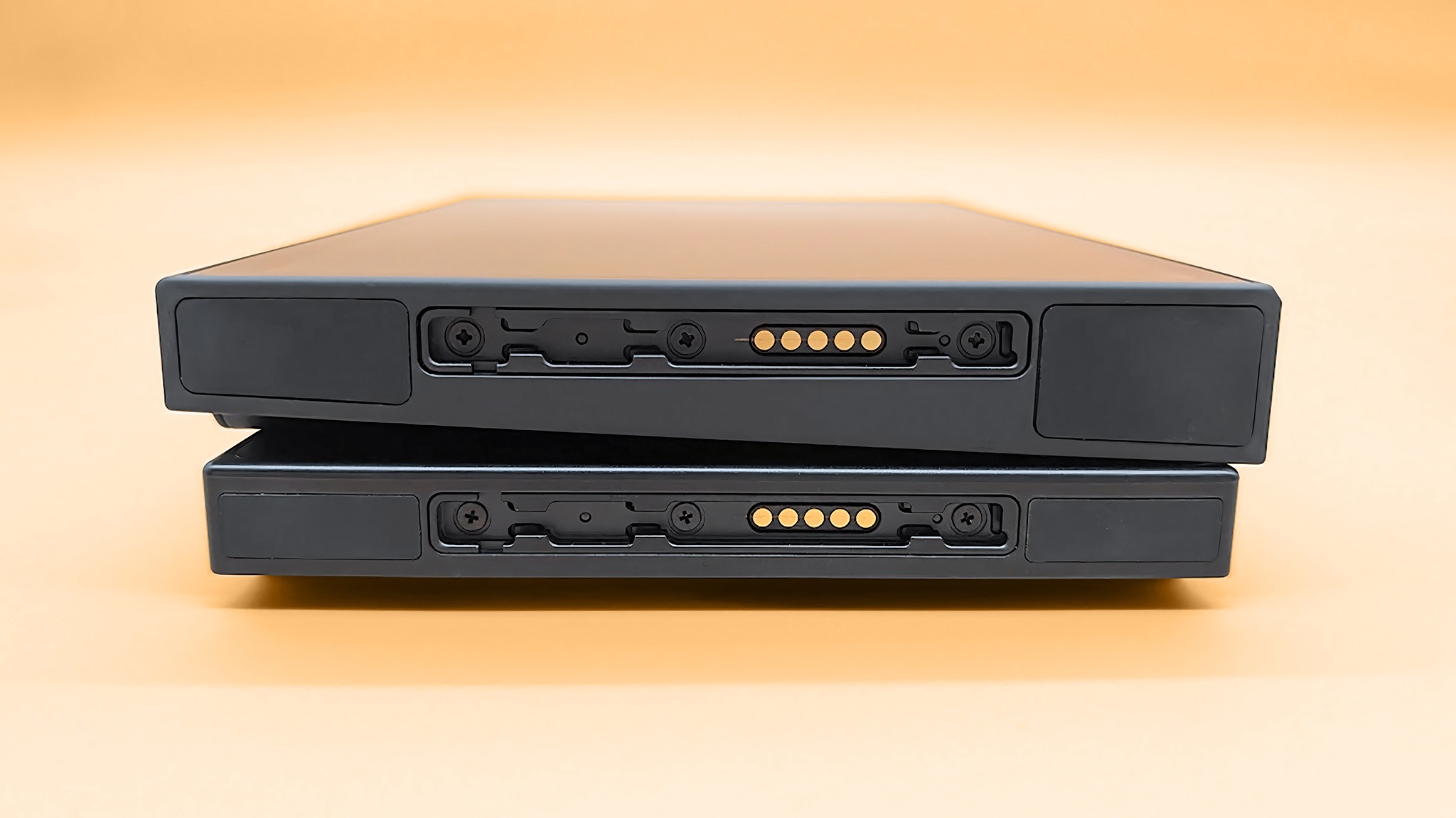
- The microSD card reader and headphone jack are on the bottom of the Legion Go 2, but on top of the Legion Go.
- The Legion Go 2’s power button is much larger and now doubles as a fingerprint reader for fast login.
- The two volume buttons on the Legion Go 2 are now thin and oval instead of circular. They are also on the other side of the handheld.
- The top vents are larger and positioned differently to help the system cool more efficiently.
- The original handheld had a forward-facing camera, but the Legion Go 2 does not have a camera at all.
Controllers with better grips and positioning
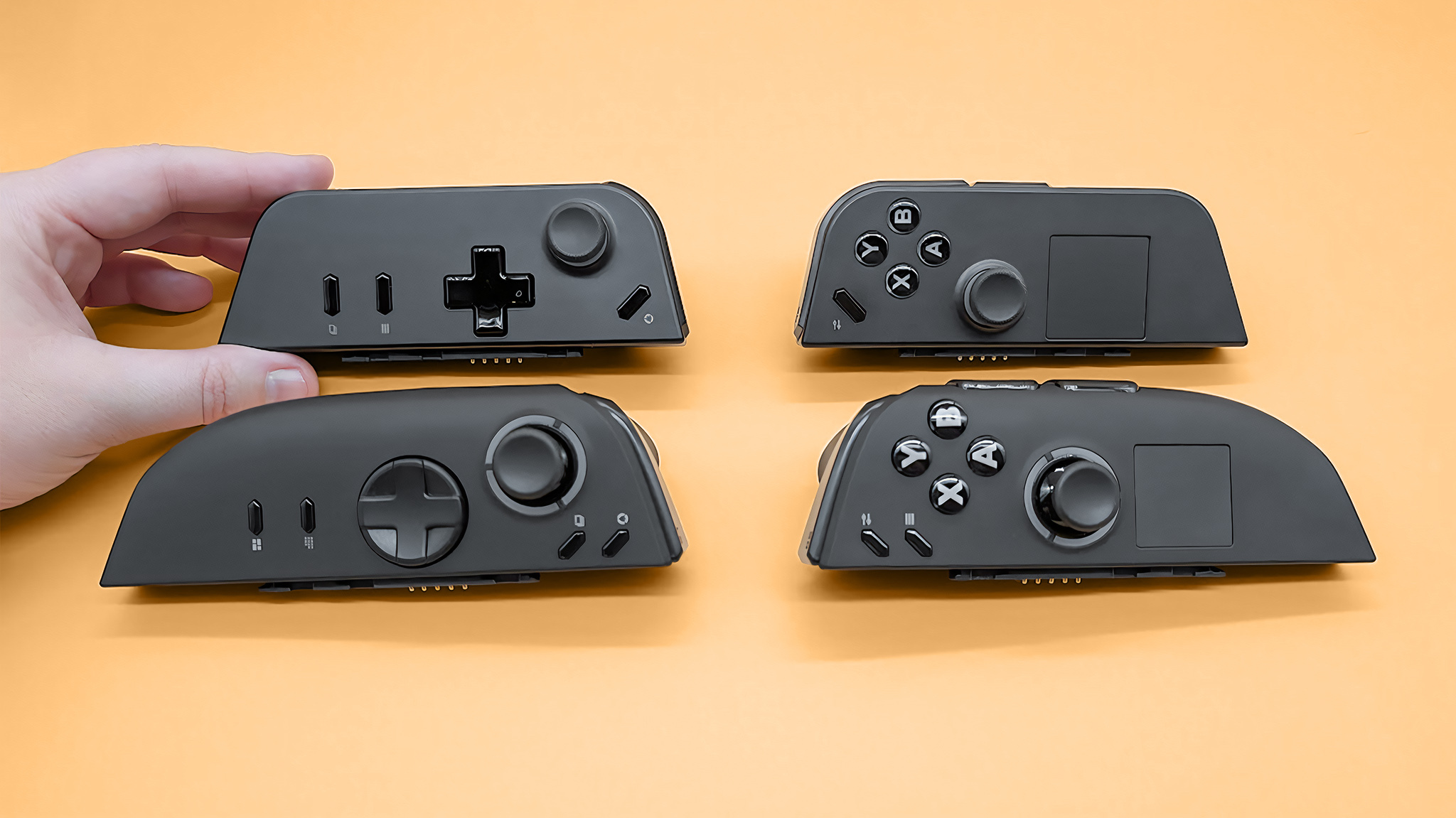
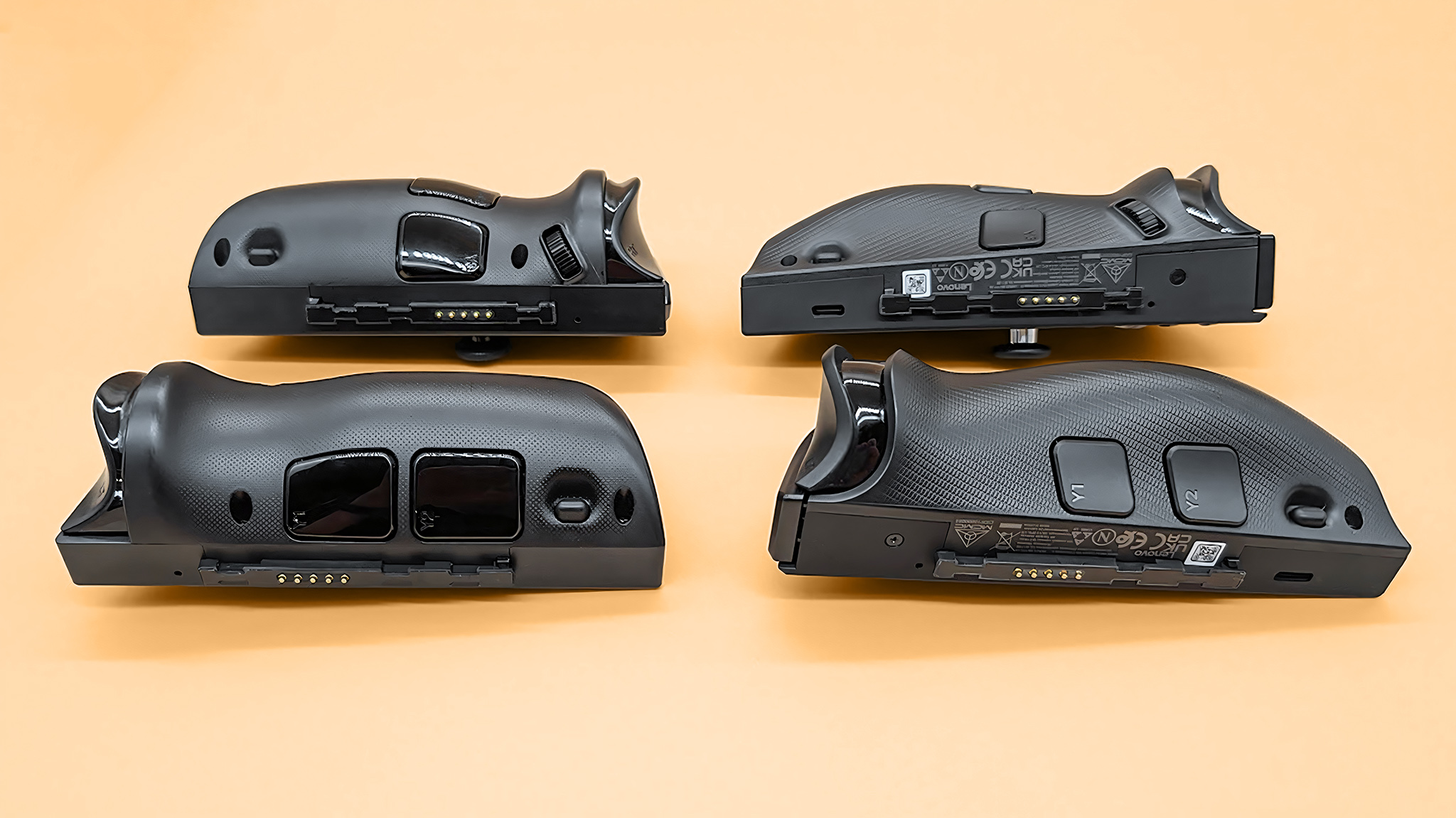
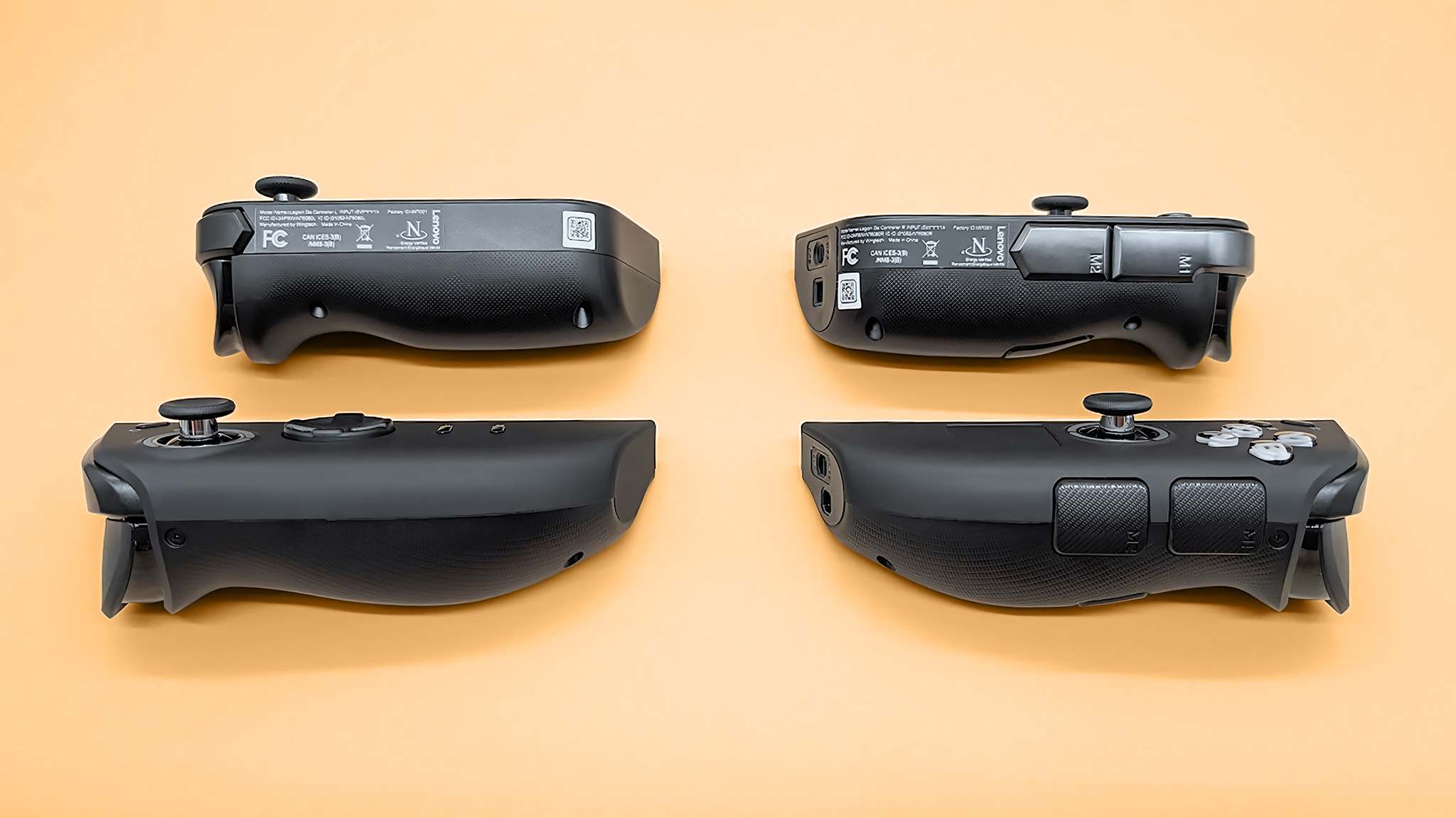
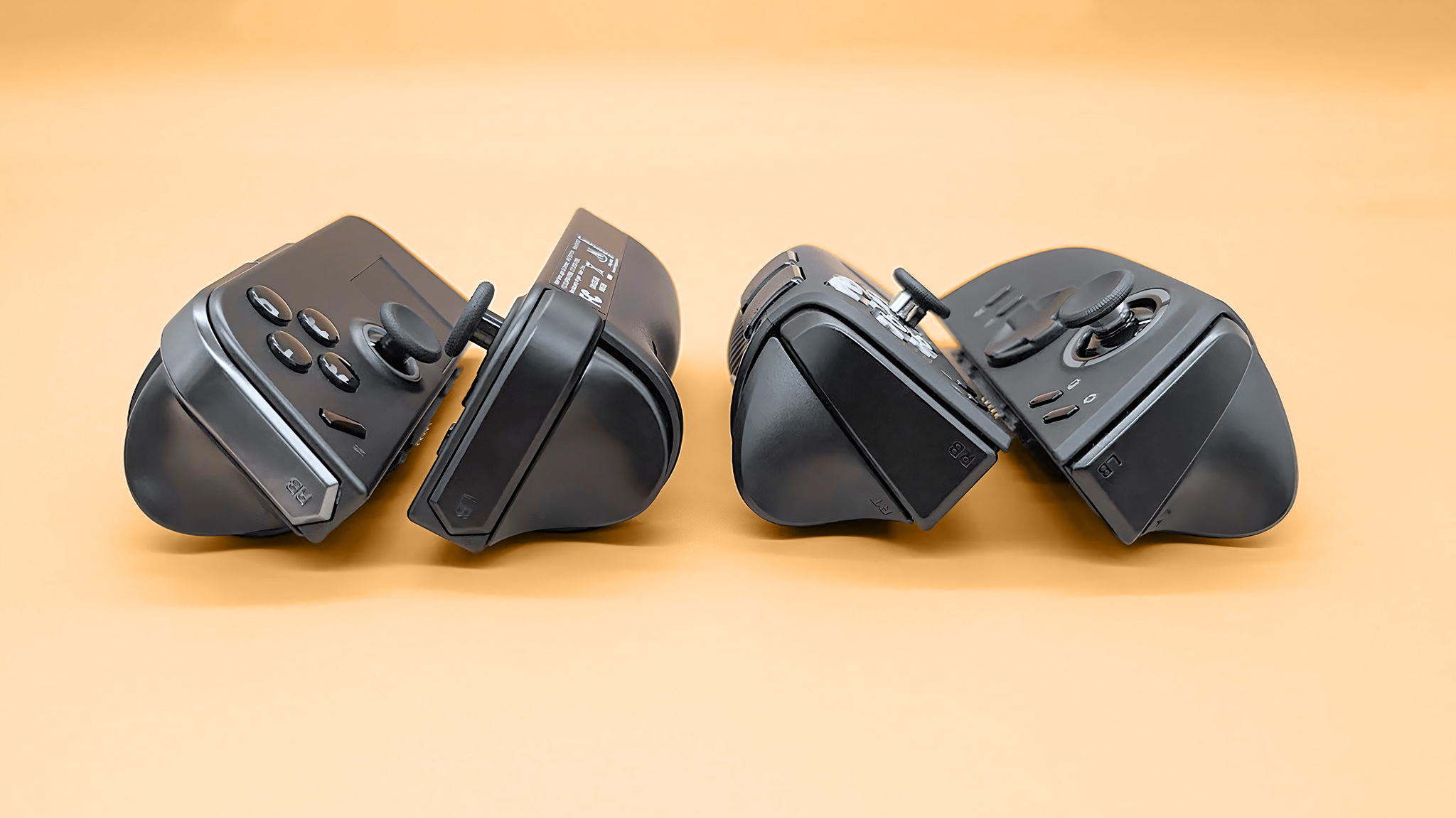
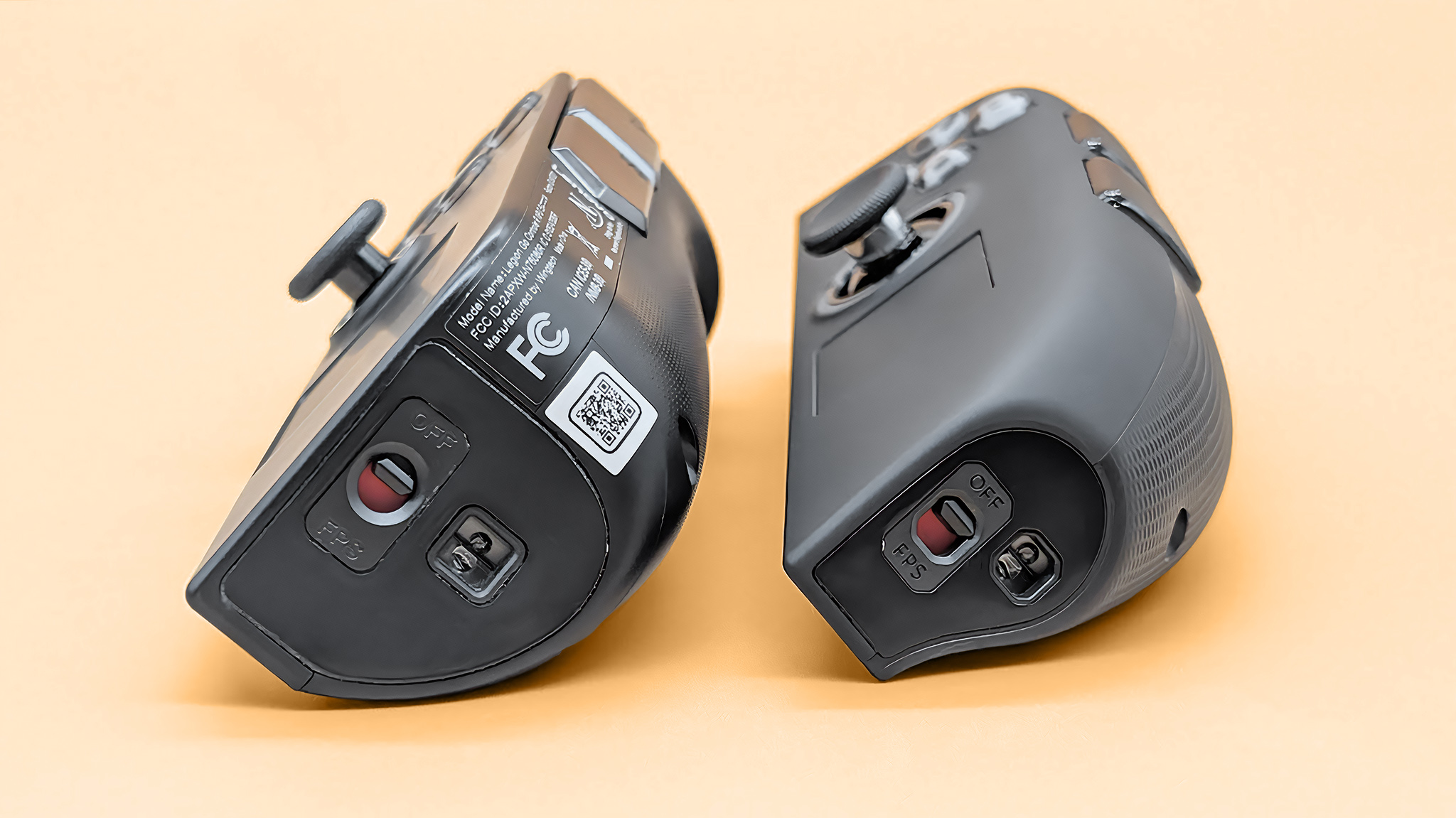
- The Legion Go 2 controllers are larger and more rounded to fit hands better.
- Back button placement has been repositioned on Legion Go 2 and some of the buttons are smaller, which not only makes it easier to hold the device, but also reduces the chances of pressing these buttons by accident.
- The new bumpers are more triangularly shaped — larger on the side closer to the screen and narrower on the outside.
- The Legion Go 2 triggers are more pronounced and have more space for players to push down on them.
- These new controllers are larger at the top and narrower at the bottom. Despite this, the FPS mode switch and sensor are about the same size.
- The menu buttons located on the bottom half of the original Legion Go’s left controller are now located under the Legion Space buttons on the top of either Legion Go 2 controller.
- There are two new buttons, located on the bottom half of the Legion Go 2’s left TrueStrike controllers, these allow users to toggle between open windows or swap between a game and the desktop.
- The new thumb grips are larger with a wider joystick base for better control. Don’t worry, these are still Hall effect joysticks.
- The D-pad has been changed and improves upon the original pressing experience.
- The RGB lighting area below the joysticks take up more space on the Legion Go 2.
- The ABXY buttons are larger and easier to access on the Legion Go 2.
- The touchpad on the Legion Go 2’s right controller is slightly smaller.
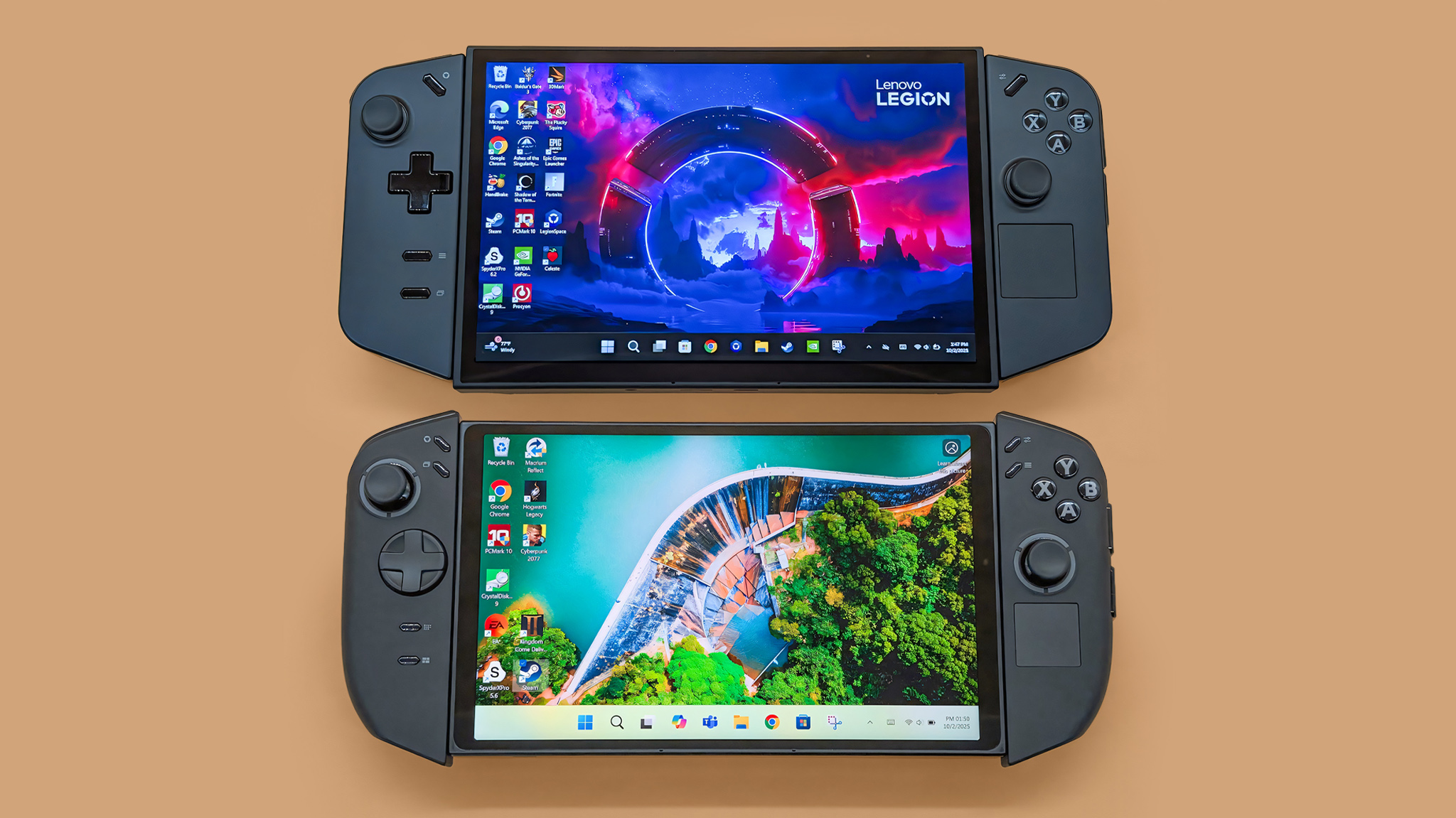
I confirmed with Lenovo that the new Legion Go 2 works with the controllers from the original Legion Go. I tested this by swapping the controllers to make sure it was accurate.
I tested using each handheld console with the other’s controllers, and everything worked perfectly. However, it does look a bit strange having mismatched controllers attached.
The controllers for the Legion Go 2 are noticeably taller than the screen itself, making the original Legion Go look a bit awkward – almost like Dumbo’s large ears. Conversely, the controllers for the original Legion Go seem too small when used with the larger Legion Go 2.
Games look so much better on an OLED display
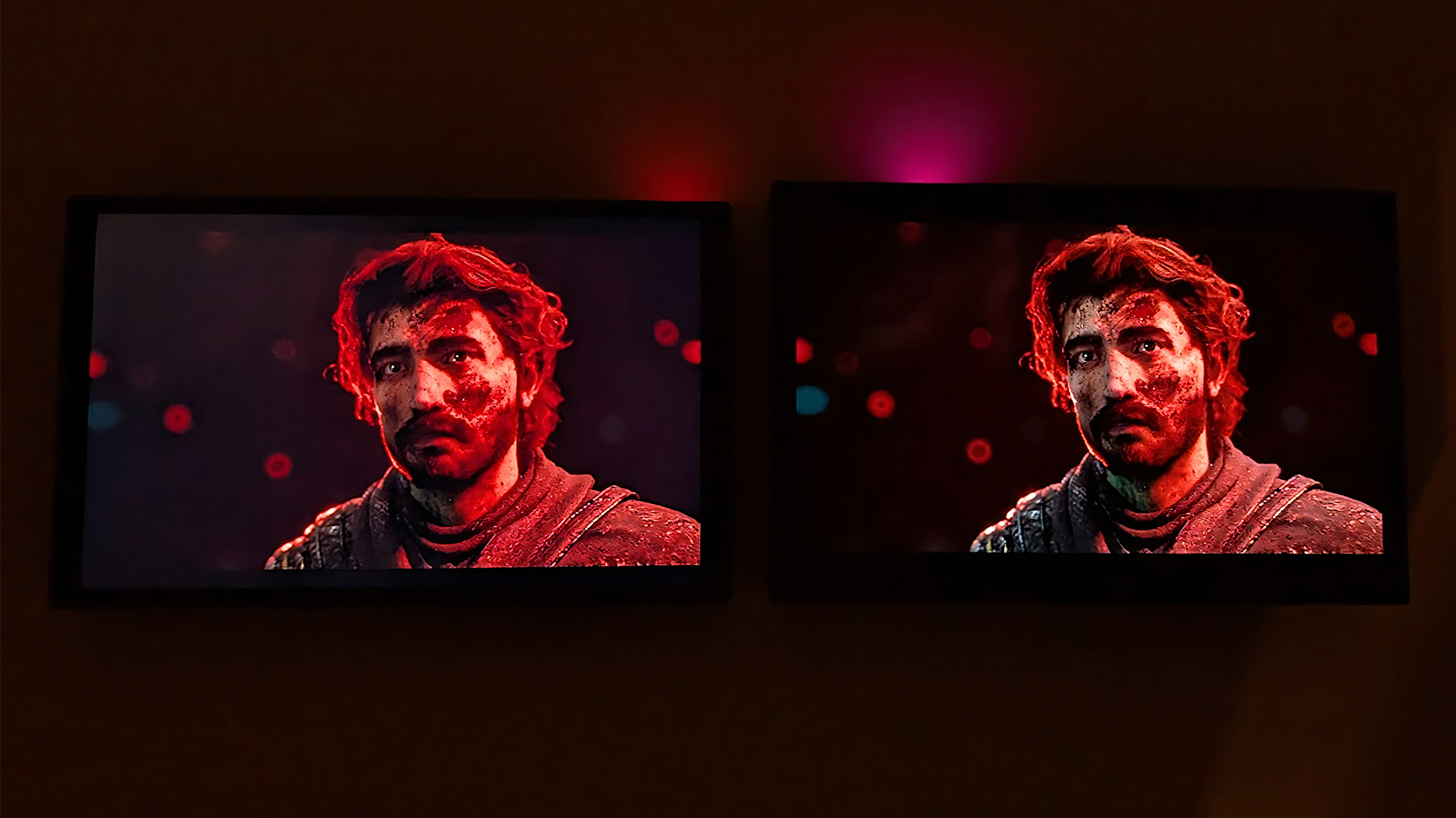
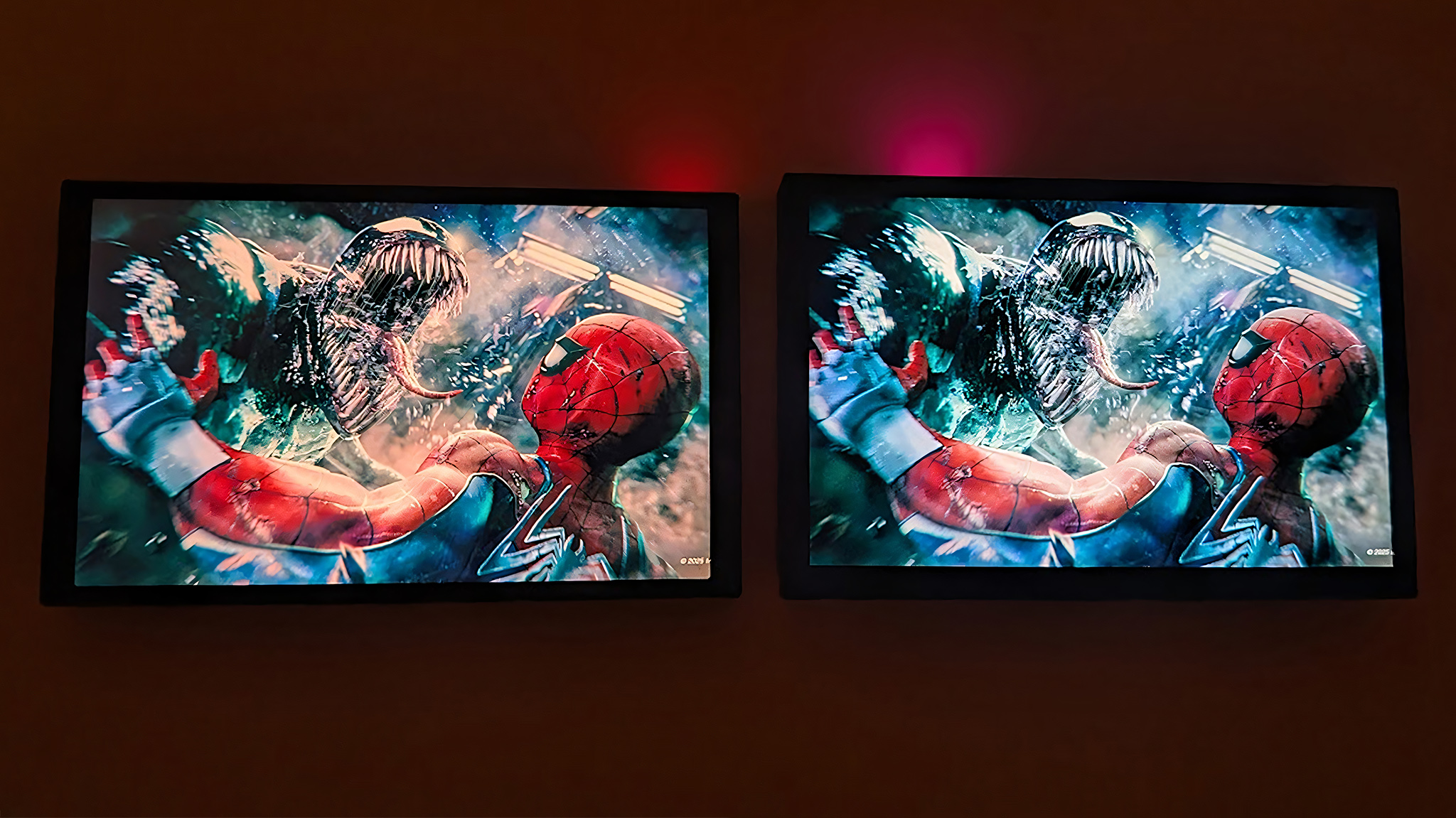
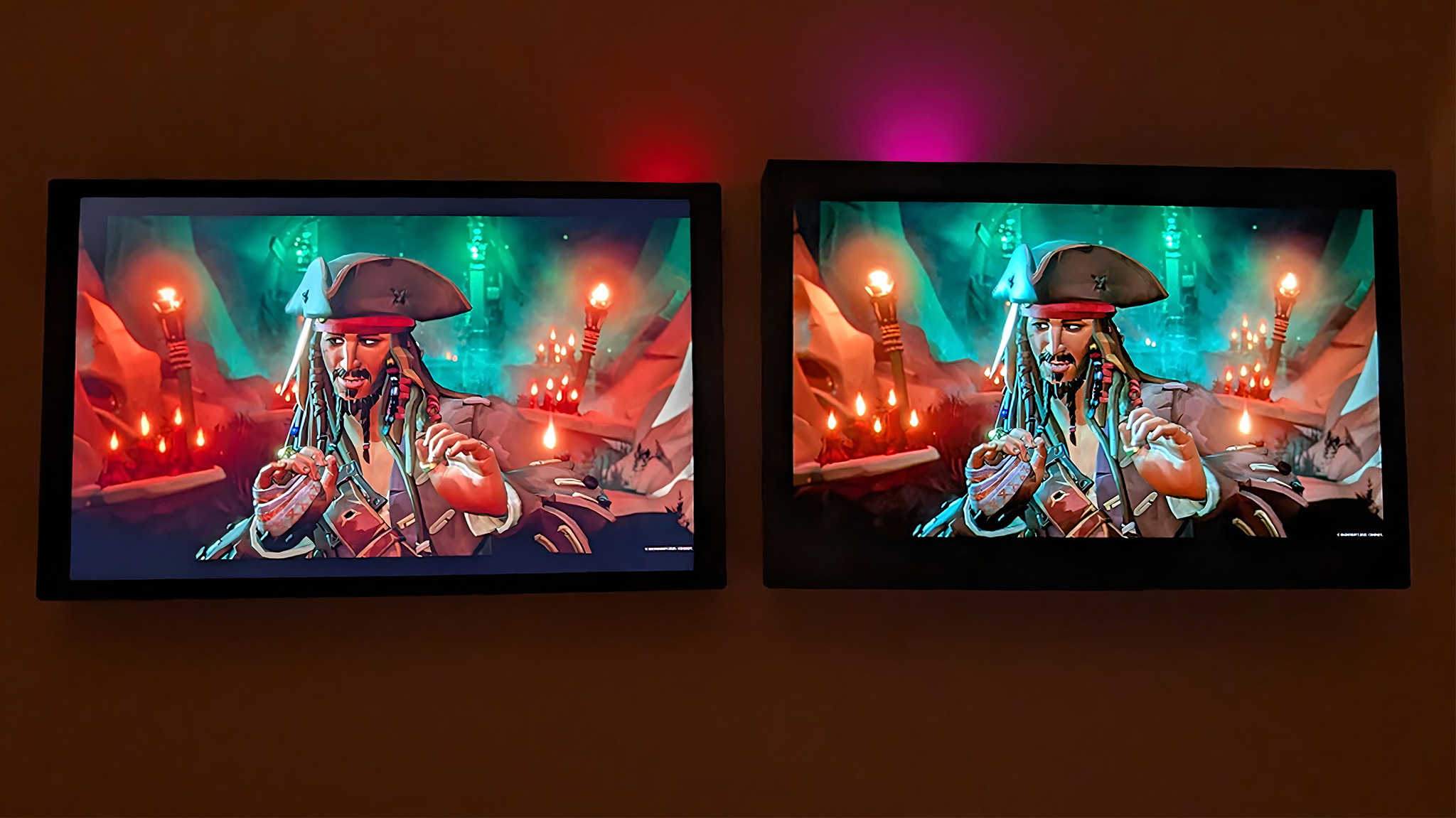
- The Legion Go 2’s display doesn’t have as high a resolution, but it’s still plenty crisp enough to show game details well (it also supports VRR and native landscape, which the Legion Go screen does not).
- The Legion Go 2’s OLED panel produces a wider range of colors and thus more accurate colors than the Legion Go’s IPS screen.
- Since the Legion Go 2’s display is an OLED, it produces true black, which means darker scenes actually allow subtle colors to pop out against black instead of glowing grey and looking more muddled.
The Legion Go 2 has a much nicer layout and design than the original handheld
I’ve really enjoyed using the Legion Go 2 for gaming on platforms like Steam and Xbox Game Pass. The updated design feels much more comfortable to hold, and the buttons are now easier to press.
The buttons on the back are a bit smaller and in a different spot now, so I don’t accidentally push them as often as I did with the older version.
The Legion Go 2 now offers fingerprint reading for easier and more convenient logins.
The new OLED display is fantastic. Games look incredible with its accurate colors, vibrant details, and deep, true blacks. I could go on and on about how much better everything appears on this screen!
All in all, Lenovo did an awesome job improving upon this next-gen gaming handheld’s design.

Stay up-to-date with the latest from Windows Central by following us on Google News! You’ll get all our news, insights, and features right in your feed.
Read More
- Hazbin Hotel season 3 release date speculation and latest news
- This 2020 Horror Flop is Becoming a Cult Favorite, Even if it Didn’t Nail the Adaptation
- 10 Chilling British Horror Miniseries on Streaming That Will Keep You Up All Night
- Where Winds Meet: How To Defeat Shadow Puppeteer (Boss Guide)
- Dolly Parton Addresses Missing Hall of Fame Event Amid Health Concerns
- Meet the cast of Mighty Nein: Every Critical Role character explained
- Jelly Roll’s Wife Bunnie Xo Addresses His Affair Confession
- 🤑 Crypto Chaos: UK & US Tango While Memes Mine Gold! 🕺💸
- World of Warcraft leads talk to us: Player Housing, Horde vs. Alliance, future classes and specs, player identity, the elusive ‘Xbox version,’ and more
- You Won’t Believe What Happens to MYX Finance’s Price – Shocking Insights! 😲
2025-10-09 17:41